Vittore Carpaccio’s paintings in Venice are well known to the English speaking world still because of John Ruskin’s and Henry James’ praising words. Do you remember? Ruskin used expressions such as “excellency and supremacy”. James, instead, as if these categories were not describing Carpaccio’s art at its best, dared further:
Carpaccio, who had the advantage of more newness and more responsibility (than Tintoretto), sailed nearer to perfection.
Uh, perfection, almost.
The exhibition of Carpaccio in Venice in 1963 and 2023… and Cipriani’s Carpaccio
As usual, “nemo profeta in patria”! Believe it or not, an exhibition dedicated to Vittore Carpaccio’s paintings in Venice was last arranged in 1963. Sixty years ago. It seems it was then when Giuseppe Cipriani, Harry’s Bar’s owner, came up with his “carpaccio”, a recipe based on raw meat, known for that intense red color typical of Carpaccio’s palette. Don’t worry. It’s not the color of the Virgin Mary’s dress which inspired Cipriani. According to Wikipedia it was a detail in “The Sermon of St Stephen” at the Louvre museum. Still, it sounds like something Tarantino might love, too.
If Carpaccio to most gourmet lovers has just meant edible raw meat for long, now that the first exhibit of this artist in the USA has been arranged and that the Doge’s palace in Venice has reopened its premises to his works, well, a new more intellectual revival is expected. Curated by Peter Humfrey, “Vittore Carpaccio: Master Storyteller of Renaissance Venice” after featuring in Washington DC National Gallery of Art, will now be visible in the Doge’s palace in Venice till June 18th, 2023. But even if you come later, we can enjoy a lot of Carpaccio’s paintings in Venice. So, keeping in mind more art and less meat, how comes Carpaccio deserves this revival after 60 years?
Vittore Carpaccio’s paintings and some sense of humour
Vittore Carpaccio’s paintings are often characterized by a brilliant, delightful sense of humour. Take for instance the masterpiece Ruskin loved most: “Two Ladies on a Balcony” at the Correr Museum. Since the last restoration in the early 1990s, the painting has been recognized as the bottom of “Hunting in the Lagoon”, a painting you can view at the Getty Museum in LA. The initial interpretation the two ladies might be courtesans has then been questioned when the connection between the two paintings was proved.
Likely the right panel of a foldable door, the two paintings in fact show two lovely scenes in a humorous contrast. While some noblemen have fun hunting ducks in the lagoon possibly competing with cormorants who dive into the water to fish, surrounded by herons, mergansers and cranes flying, the two ladies are at home, looking quite bored, busy entertaining a parrot, a couple of doves, a peacock and two dogs. A true zoo for birds… to say nothing of the two dogs.
Apart from the fact that according to most art historians the painting is an allegory of marital love, you will agree that we cannot, but wait to discover what the left side of that door could show. If only we could know! More children? What does the dog holding the leash look like apart from (mildly) baring his teeth? Or more animals? And what about if it were an empty banquet table…? Maybe these ladies are thinking about their husbands, “They said they went getting some food, but it’s taking ages!”**
Vittore Carpaccio’s paintings and some tenderness
Often you will notice tender gestures in Vittore Carpaccio’s paintings. I love that tenderness especially when it concerns saints. It turns them into real people with a great sense of humanity. This is something in common with his sense of humour: smiling at these saints is not a way to laugh at them, but strips down the hieratic nature of its sense of distance.
Take for instance the painting by “St Augustine in his Studio” at the Scuola San Giorgio of the Dalmatians. St Augustine is portrayed while he is writing a letter to St Jerome about the glory of the blessed souls enjoying in Jesus Christ’s glory. In that moment a mystical apparition, a ray of light enters the room, announcing Jerome’s death in Bethlehem and reproaching Jerome for his intellectual arrogance. To the left, a white dog watching.
Vikhram Seth in his novel “An Equal Music” found the right words to describe the scene:
The pen is poised in your master’s hand, the light of prescient knowledge is on his face, and long late shadows jag the whole plain floor, empty except for you, O glorious mutt. How moist your nose is, how shiny and attentive your eye. The painting is unimaginable without you. Christ could disappear from his niche and not be missed.
Carpaccio as a reporter of Venice at his time
Don’t let yourself get cheated by Carpaccio’s timeless stories, though. They are often connected to the contemporary age he lived in.
His art constantly refer to fashion, for instance, precious textiles, book printing, Renaissance architecture and sculpture (marble, towers, clocks, monuments) and not just. The war between Venice and the Ottoman empire and the issues faced by foreign communities living in Venice, in other words the relationship with diversity, is an overwhelming presence.
Take for instance the cycle dedicated to the Virgin Mary in the Scuola of the Albanians —three works are at the Ca’ d’oro Museum in Venice. Mary’s life is of inspiration for the brethren, happy to help with dowries the poorer girls in their community!
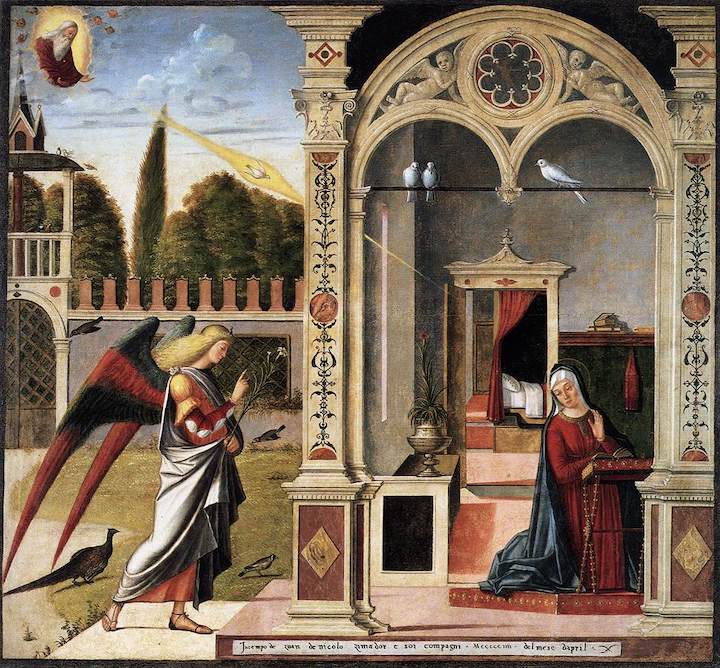
Vittore Carpaccio, Scuola of the Albanians, Annunciation, 1504, Ca’ d’Oro, Giorgio Franchetti Gallery, Venice
An invitation to “slow art”: Carpaccio and his narrative vein through paintings
We live in a time of distraction. Pictures flip in social networks one after the other, mixing information of the most different according to some algorithms designed to help us desire and possibly buy, making everything look alike without any critical approach.
Carpaccio teaches us to enjoy art slowly and to discern significance in small details. The accuracy of his paintings forces us to slow art, including the joy of discovering something you had not originally noticed. Not everything has a meaning, but it’s worth while being noticed.
A dream painted
How about “The vision of the Prior Francesco Ottobon” or the “Dream of St Ursula” at the Accademia Galleries? Carpaccio has portrayed in both the vision of a dream, a dream representing a miraculous apparition.

Vittore Carpaccio, Apparition of the Crucifixes of Mount Ararat in the Church of Sant’Antonio di Castello, 1511, Accademia Galleries, Venice
The interior of the church of Sant’Antonio di Castello appears with strong realism, including ex voto of the Arsenale workers, wax candles, ships models. We also see a painting that Carpaccio himself painted for the same church on behalf of the Patriarch Antonio Contarini. Even Ursula’s room could be the bedroom of a Venetian noblewoman with its furniture, vases, objects and textiles.
So fascinating! Carpaccio has painted the subconscious of the psyche as a space for God’s epiphany. Lots of work for Sigmund Freud and for us, too. Once you enter Carpaccio’s world of diversity, so beautifully represented with its architecture, its stories of fears, tensions and hopes, its characters, with their dresses and expressions, its animals, its ships, well, it is hard to leave it.
by Luisella Romeo
registered tourist guide in Venice, Italy
www.seevenice.it
**Of course, there are many different interpretations and mine is just a playful one. In fact, I have the impression these ladies are not really bored. They also look lost, melancholic.



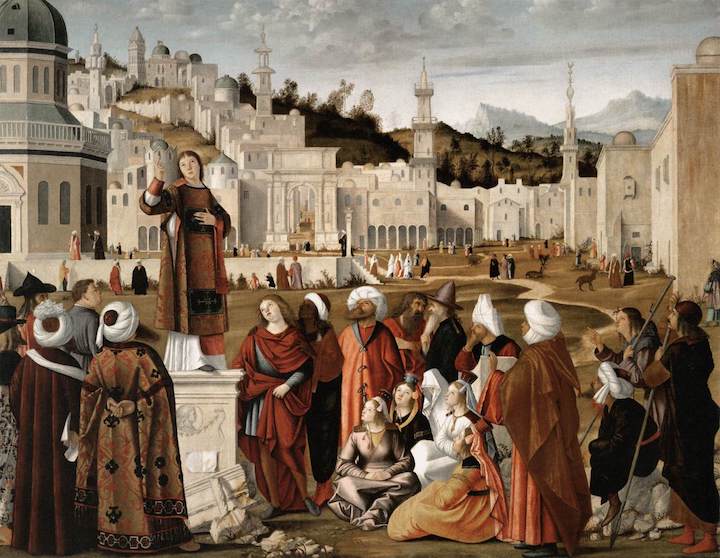

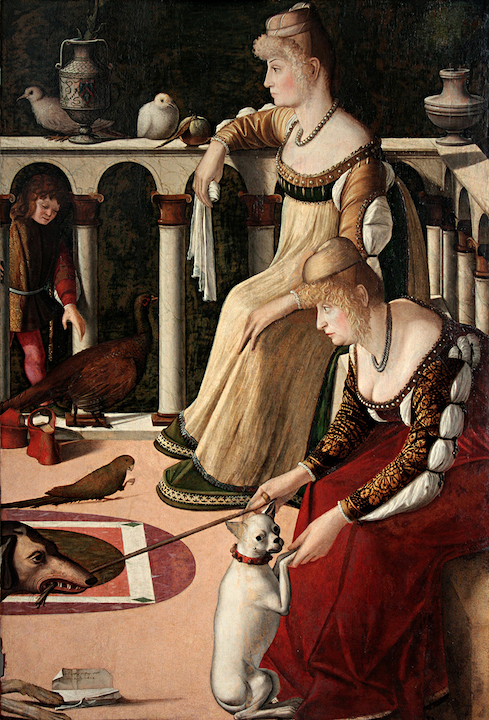
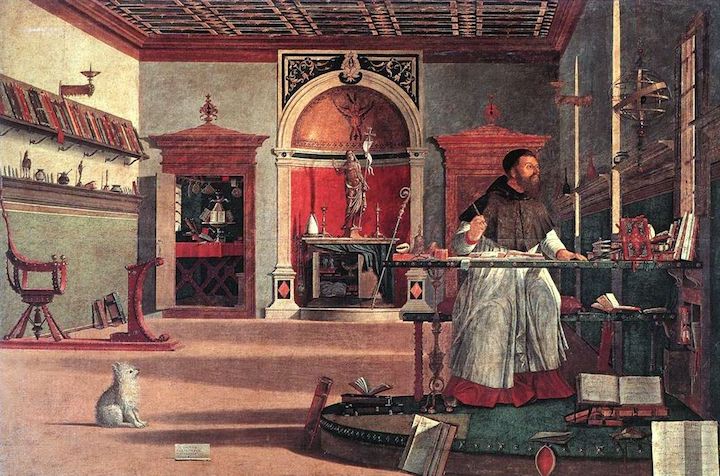
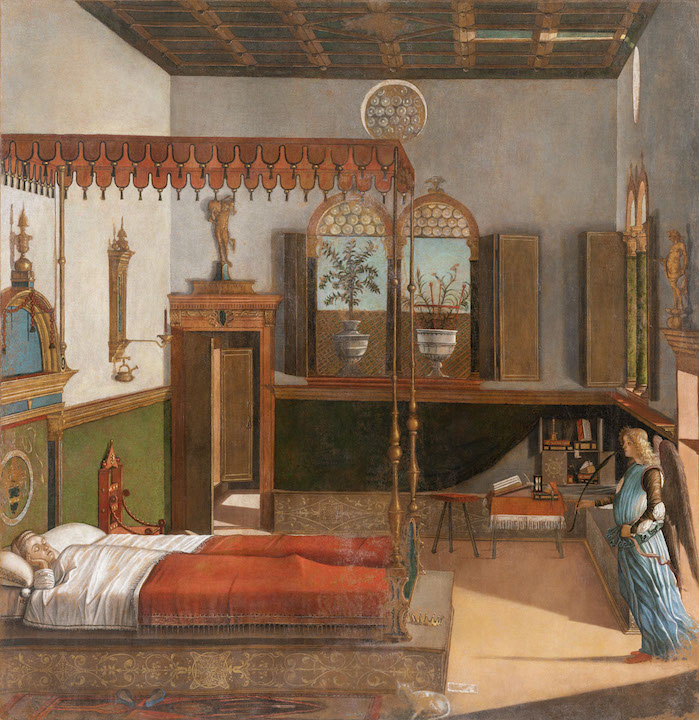

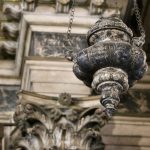
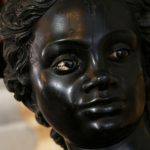

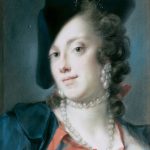
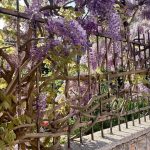
Another great art post! I so love Carpaccio’s paintings – he is the greatest chronicler of Venetian life, style, fashion – even amidst the great political and religious events that he depicts. I’ll be keeping this wonderful blog handy as I spend at least one day of my upcoming trip at the Doge’s Palace and on the Carpaccio trail!
So honored to hear this, dear Jill! I am sure you will love the exhibit and do not miss visiting the Scuola degli Schiavoni to admire the wonderful restoration just done. Btw, if you want to hear more about the two ladies, let me know as I have read a great article about them which has cast a different interpretation. A presto!